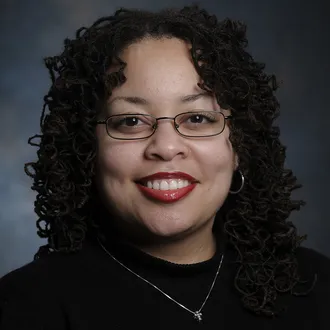Embracing the Beauty and Tension of Miracle Language

“What are you hoping for at this point?” I asked the mother of an eighteen-year-old boy, who she was nested lovingly beside. (Her son was in critical condition, and his survival was questionable from the medical team’s perspective.) She looked across the room with a long pause as if searching for an answer within the medical equipment or written on the walls. She then exhaled, long and slow, from a deep place within herself and, assuredly, faced me and replied, “I am hoping for a miracle. I believe God will totally and completely heal my baby.”
The strength and fullness of her faith were evident in that statement. It was almost as if God had to live up to her expectations and belief system. Her faith required God to move or for “Jesus to fix it.” Only time would tell how God would intervene.
The beliefs and words that the mothers spoke are those routed in spiritual language, or "miracle language."
A Background on Miracle Language
I am a native of the South and work at the University of Alabama at Birmingham. I am an Alabamian born and bred in Montgomery, a “Black Belt” county known for its rich soil that produced prime-quality cotton when this industry fueled the state. Alabama is also known for being a conservative and proud faith-based state. The prevalence of faith in this state means our patients and their loved ones may use hope and miracle language with members of the medical team, whether we are prepared for it or not.
"In most healthcare settings, miracle language can be a source of discomfort for clinicians who have not been trained in how to respond to it or who simply have no desire to engage in it."
In most healthcare settings, miracle language can be a source of discomfort for clinicians who have not been trained in how to respond to it or who simply have no desire to engage in it. This language may be challenging for clinicians without a palliative care background (most clinicians). When this happens, I am consulted to visit with the patient and “rationalize” this language for the team. I have often felt as if I were translating miracle language to the medical team.
The Powerful Role of Miracle Language
In my role as a chaplain, the hope for a miracle and the use of miracle language are my constant companions. They greet me daily in the midst of suffering and trauma, or in the joy and delight of a live birth.
"I have found that miracle language has the power to help individuals self-soothe in moments of crisis and give the individual something bigger than themselves to hold."
I have found that miracle language has the power to help individuals self-soothe in moments of crisis and give the individual something bigger than themselves to hold. Miracle language becomes a coping mechanism from the knitted patterns of life experience and faith. It is the pattern of an individual’s journey that creates this incredible language and helps stabilize caregivers and patients. This language is not relegated to race, faith, gender, or ethnicity. Instead, it transcends all categories and boundaries.
Miracle language has the power to fill the space of a patient’s room, but where does this language come from, and why do families and caregivers use this language?
Why Do Patients and Caregivers Use Miracle Language?
In my opinion, miracles concretize the hope and faith of patients and their families. Miracles are the actualization of their faith. Patients and caregivers use miracle language to invoke movement from God, as a statement of faith, as a coping mechanism to adapt or adjust, or to defer autonomy/control of the situation beyond the medical team to God (Stonestreet, 2022; Leal et al, 2022; Blackler, 2017; Widera et al, 2011; Sulmasy, 2007). Additionally, the use of miracle language can be a form of denial; a need to dissociate from the harshness of the situation (Leal et al, 2022; Widera et al, 2011; Sulmasy, 2007).
Miracle language can offer encouragement or comfort to patients and caregivers. It can provide meaning and potentially lead individuals to a path of self-transcendence or personal growth. (Balboni et al, 2013).
"In my opinion, miracles concretize the hope and faith of patients and their families. Miracles are the actualization of their faith."
How to Invite Miracle Language in Your Practice
I invite clinicians to wrestle with the tension that miracle language may cause within you. Doing so offers the opportunity for each person to be present. Clinicians do not need to take ownership of the miracle or ensure it will happen for the patient or the caregivers; they will not hold us responsible for the miracle.
Many clinicians have shared the burden they feel to make the impossible happen when this language is used. Instead, a simple “I’m hoping the same for you” will often suffice. The language is an invitation to join the individual in their hope-filled desires. Additionally, a response could be offered that affirms the miracle language while still bringing comfort to the patient, “In the midst of our journey towards a miracle, let’s work on symptom burden/comfort care measures.”
"When clinicians take the time to ask patients and caregivers what they are hoping for, this becomes a place of validation and empowerment."
When clinicians take the time to ask patients and caregivers what they are hoping for, this becomes a place of validation and empowerment. This opportunity allows the patient/caregiver to be heard and affirmed in their desire. It also creates a trust-filled therapeutic alliance with the clinician that will significantly influence their medical decision-making and goals of care.
However, for those who appreciate a more evidence-based approach beyond the ministry of presence, two models have been noted for their efficacy: the AMEN model and the VALUE method (Cooper et al, 2014; Curtis and White, 2008).
The AMEN Model
This model offers validation and joining of the use of miracle language through its mnemonic: Affirm, Meet, Educate No matter what (Cooper et al, 2014). Through this model, clinicians can simply join the use of hope and miracle language from patients and caregivers and meet them where they are.
The VALUE Method
This model respects the emotionality behind miracle language, encourages reflective listening, and invites curiosity and questions from patients and providers (Curtis and White, 2008). The VALUE method recognizes the value system of the patient and the caregiver through its mnemonic: Value, Acknowledge, Listen, Understand, Elicit.
Final Thoughts
As clinicians, miracle language bids us to respond in some form or fashion. To ignore the tension is to deny the thoughts and feelings that result in miracle language, and what that miracle language can create among us as health professionals. Why not take the risk of wrestling and being present with it?

Be the first to read articles from the field (and beyond), access new resources, and register for upcoming events.
Edited by Melissa Baron. Clinical review by Andrew Esch, MD, MBA.
